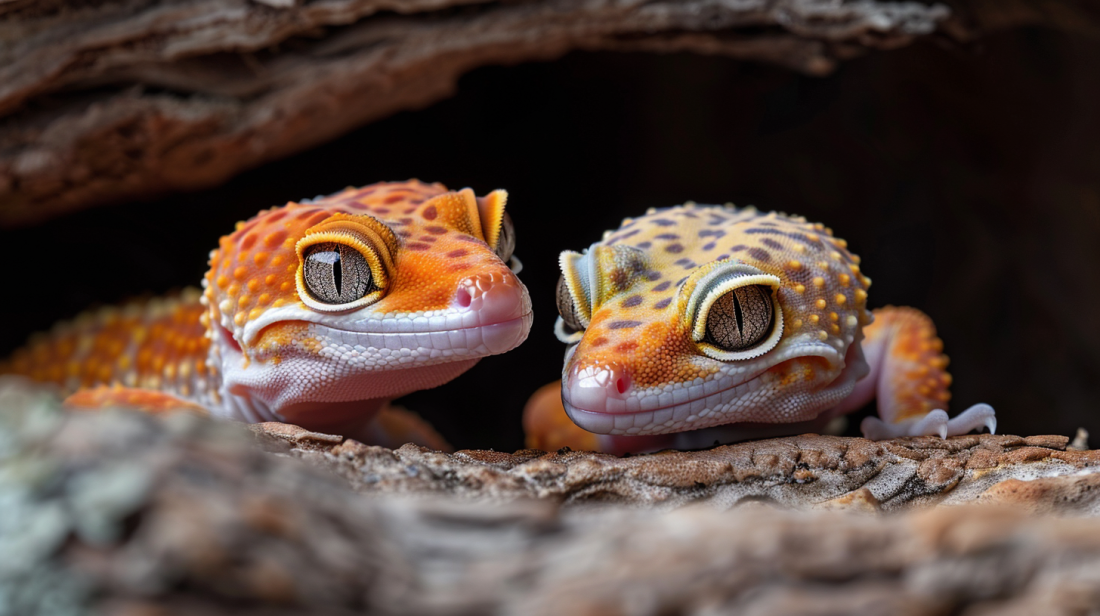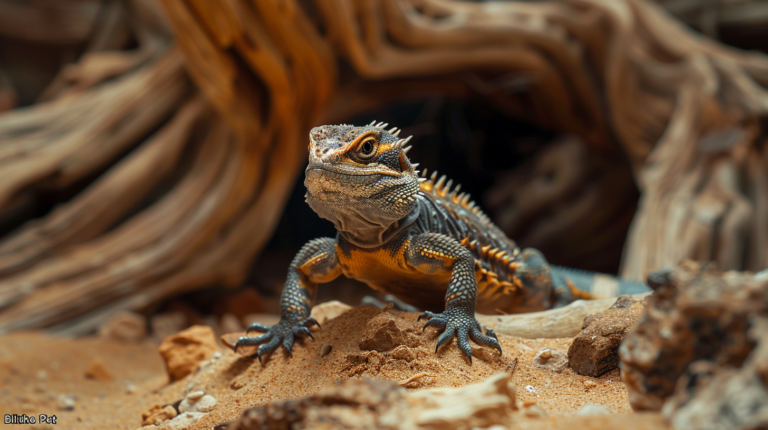Learn to identify male vs female leopard gecko differences with 6 key signs. Expert guide for gecko sexing, behavior patterns, and care tips for pet owners.
Table of Contents
Determining whether your leopard gecko is male or female can seem like a daunting task, especially for new reptile enthusiasts. Understanding the male vs female leopard gecko differences is crucial for proper care, breeding decisions, housing arrangements, and overall pet management. While these fascinating creatures may look similar at first glance, there are distinct physical and behavioral characteristics that can help you accurately identify your gecko’s gender.
Leopard geckos (Eublepharis macularius) are among the most popular pet reptiles worldwide, with over 3 million households in the United States keeping reptiles as pets according to the American Pet Products Association. Whether you’re a seasoned herpetologist or a first-time gecko owner, knowing how to sex your leopard gecko is an essential skill that will enhance your understanding and care of these remarkable animals.
In this comprehensive guide, we’ll explore six important signs that distinguish male from female leopard geckos, discuss the best practices for gender identification, and provide expert insights to help you become confident in recognizing these crucial differences.
Understanding Leopard Gecko Sexual Dimorphism
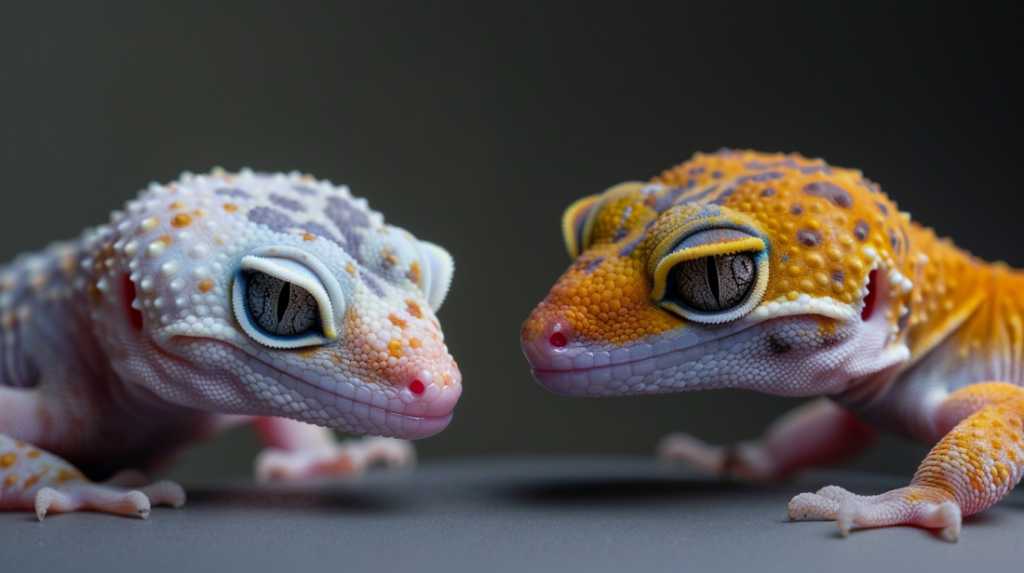
Sexual dimorphism refers to the distinct differences in appearance and behavior between males and females of the same species. In leopard geckos, these differences become more pronounced as the animals mature, typically becoming clearly visible when geckos reach 6-8 months of age and weigh approximately 45-50 grams.
The process of determining gecko gender, known as “sexing,” requires careful observation and sometimes gentle physical examination. Unlike mammals, reptiles don’t have external reproductive organs that are immediately obvious, making gender identification more challenging but certainly not impossible with the right knowledge.
Dr. Jennifer Williams, a veterinary herpetologist with over 15 years of experience, explains: “Accurately sexing leopard geckos is fundamental for responsible pet ownership. It affects everything from housing decisions to health monitoring, and it’s especially critical if you’re considering breeding.”
Sign 1: Pre-Anal Pores – The Most Reliable Indicator
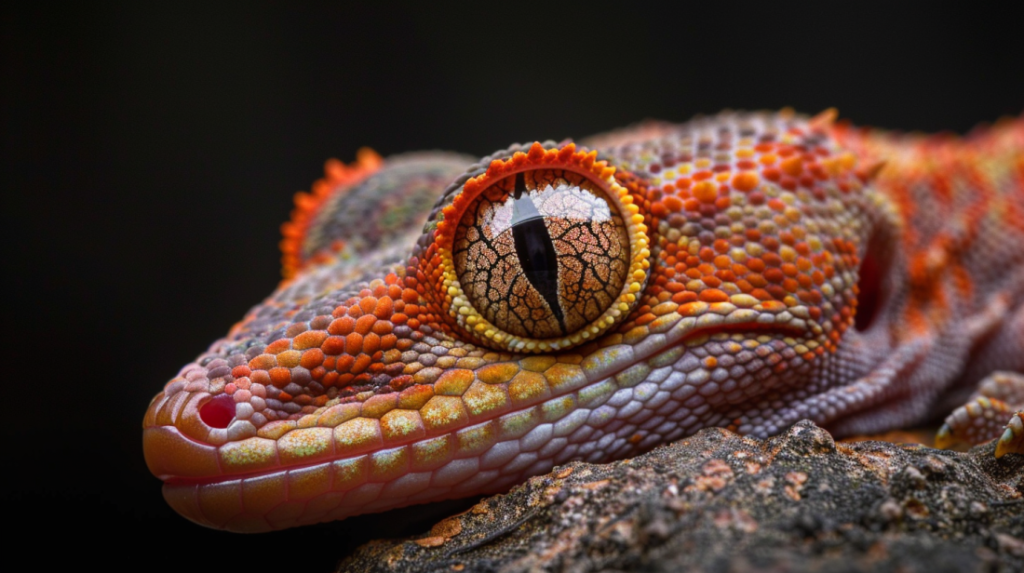
What Are Pre-Anal Pores?
Pre-anal pores are specialized glands located just in front of the vent (cloaca) on the underside of your leopard gecko. These pores serve as scent glands and are the most reliable method for distinguishing between male vs female leopard gecko specimens.
Male Characteristics:
- Prominent V-shaped row of 15-25 clearly visible pores
- Pores appear as dark, waxy dots or holes
- More pronounced and easily visible
- Often secrete a waxy, yellowish substance
- Form a distinct chevron pattern pointing toward the tail
Female Characteristics:
- Faint or absent pre-anal pores
- If present, typically fewer than 10 barely visible pores
- Appear as tiny pinpricks rather than pronounced holes
- Rarely secrete any visible substance
- May be completely smooth in the pre-anal area
How to Examine Pre-Anal Pores:
- Secure your gecko gently but firmly
- Turn the gecko over carefully to expose the belly
- Look just above the vent for the characteristic pore pattern
- Use adequate lighting – natural daylight or a bright LED works best
- Take a photo if needed for comparison or veterinary consultation
Important Safety Note: Always handle your gecko gently and support their body properly. If your gecko seems stressed, take breaks during examination.
Sign 2: Femoral Pores – Secondary Gender Identification
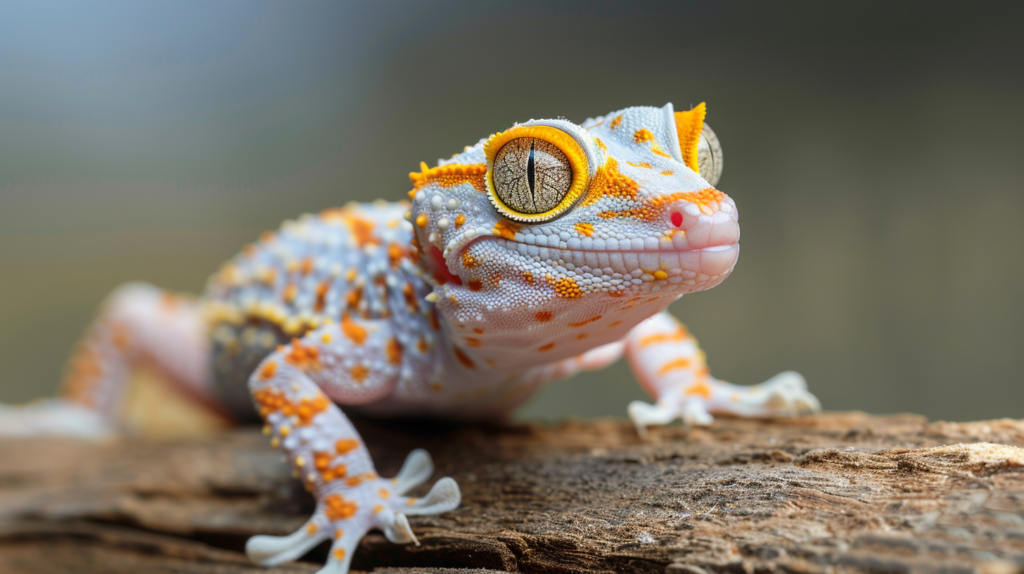
Understanding Femoral Pores
Femoral pores are located on the underside of the thighs and, like pre-anal pores, serve as scent glands. While not as definitive as pre-anal pores, they provide additional confirmation of gender identification.
Male Characteristics:
- 20-30 distinct pores on each thigh
- Larger and more prominent than females
- Often secrete waxy plugs
- Form continuous rows along the inner thigh
Female Characteristics:
- Fewer, smaller pores (typically 10-15 per thigh)
- Less prominent and often barely visible
- Rarely produce visible secretions
- May be completely absent in some females
| Feature | Males | Females |
| Number of Pores | 20-30 per thigh | 10-15 per thigh |
| Visibility | Highly prominent | Barely visible |
| Secretions | Common | Rare |
| Size | Large, distinct | Small, faint |
Sign 3: Hemipenal Bulges – The Definitive Male Marker
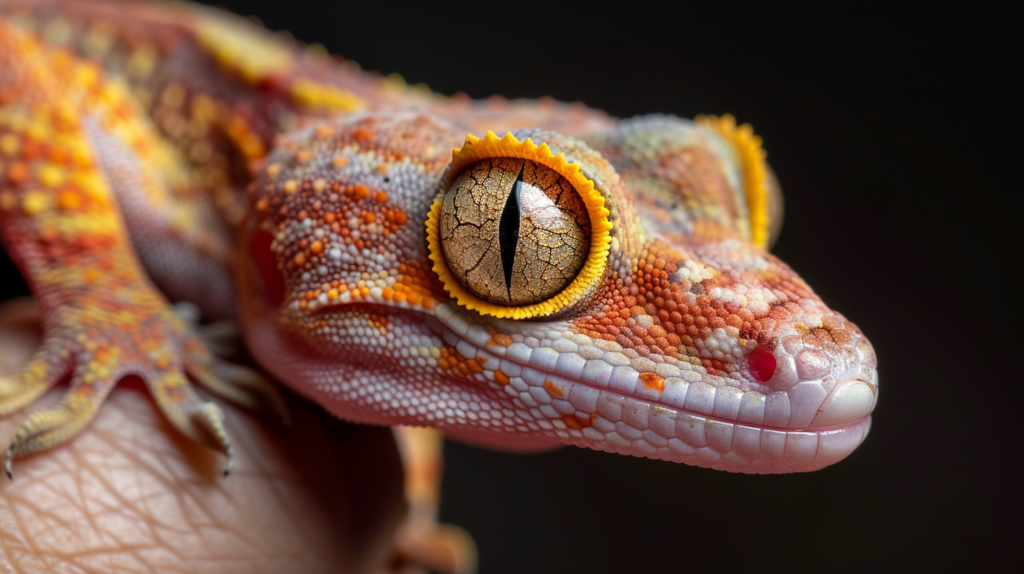
What Are Hemipenal Bulges?
Hemipenal bulges are perhaps the most definitive sign of a male leopard gecko. These are swellings at the base of the tail that house the male reproductive organs (hemipenes).
Identifying Hemipenal Bulges:
In Males:
- Two distinct bulges immediately behind the vent
- Become more pronounced with age and sexual maturity
- Create a noticeably wider tail base
- May be accompanied by a slight indentation between the bulges
In Females:
- Smooth, streamlined tail base with no bulges
- Tail tapers gradually from body to tip
- No swelling or irregularities behind the vent
Age Considerations:
- Juvenile geckos (under 6 months): Hemipenal bulges may not be clearly visible
- Adult geckos (over 8 months): Bulges should be clearly pronounced in males
- Breeding-age adults: Most distinct hemipenal bulge development
Dr. Mark Thompson, reptile specialist at the National Reptile Breeding Association, notes: “Hemipenal bulges are 99% accurate for sexing adult leopard geckos. They’re nature’s way of making male identification foolproof once the animal reaches maturity.”
Sign 4: Body Size and Proportions
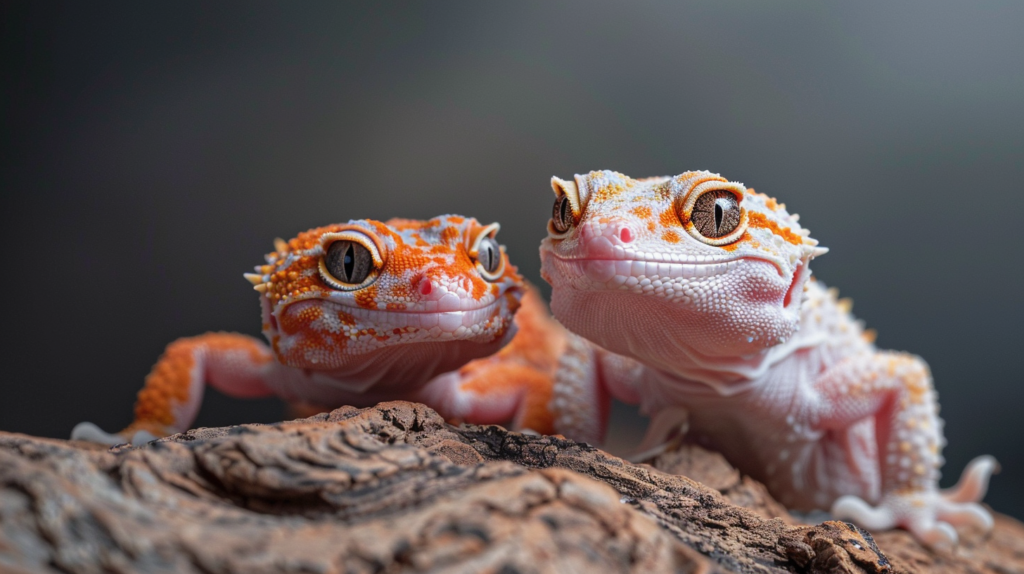
General Size Differences
While not as reliable as anatomical features, there are notable size differences between male vs female leopard gecko adults that can support gender identification.
Male Physical Characteristics:
- Larger overall size – typically 8-10 inches in length
- Broader head with more pronounced jaw muscles
- Thicker neck and more muscular appearance
- Wider tail base even beyond hemipenal bulges
- Average weight: 60-80 grams for adults
Female Physical Characteristics:
- Smaller, more delicate build – typically 7-8 inches in length
- Narrower head with more refined features
- Slender neck and overall build
- Consistently tapered tail from base to tip
- Average weight: 45-65 grams for adults
Important Considerations:
Body size can vary significantly based on:
- Genetics and morph type
- Feeding schedule and nutrition
- Age and overall health
- Individual variation within the species
Therefore, size should never be used as the sole determining factor for gender identification.
Sign 5: Behavioral Differences and Territorial Patterns
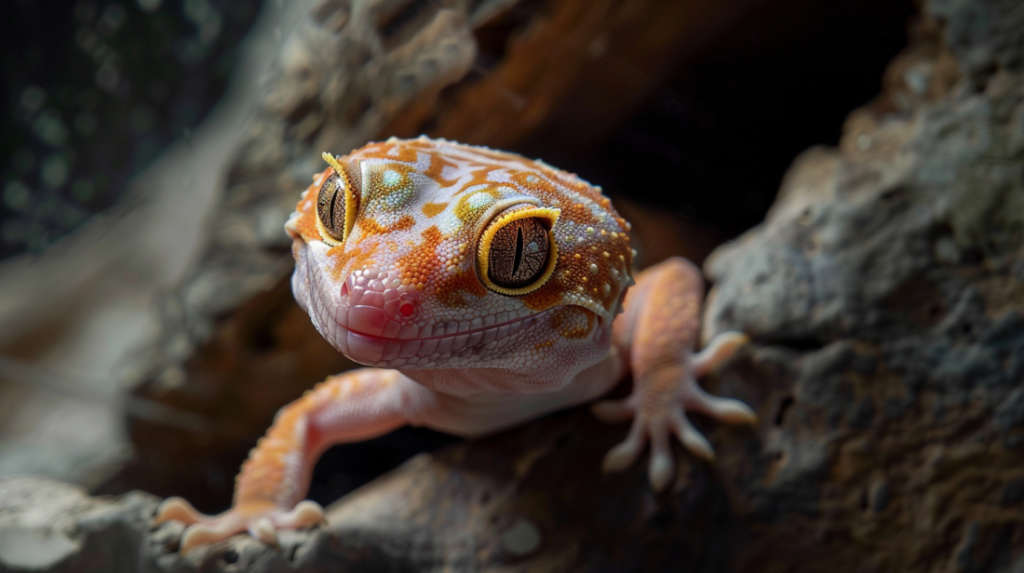
Male Behavioral Characteristics:
Territorial Behavior:
- More likely to be aggressive toward other males
- Tail waving and posturing displays
- Scent marking behavior using femoral and pre-anal pore secretions
- Dominant positioning on highest basking spots
Breeding Behaviors:
- Vocalization during breeding season (chirping, clicking sounds)
- Pursuit behavior toward females
- Head bobbing and courtship displays
- Increased activity during nighttime hours
Female Behavioral Characteristics:
General Temperament:
- More docile and less territorial
- Better tolerance of other geckos (species-dependent)
- Less aggressive feeding behavior
- Calmer disposition during handling
Reproductive Behaviors:
- Nesting behaviors when gravid (pregnant)
- Decreased appetite before egg-laying
- Seeking darker, enclosed spaces for egg deposition
- Post-laying recuperation behavior
Behavioral Assessment Guidelines:
| Behavior Type | Males | Females |
| Aggression Level | High toward other males | Generally lower |
| Territorial Marking | Frequent | Rare |
| Vocalization | Common during breeding | Minimal |
| Handling Tolerance | Variable | Generally higher |
Expert Insight: According to reptile behaviorist Dr. Sarah Chen, While behavioral differences exist, they should complement physical examination rather than replace it. Environmental factors, individual personality, and health status all influence behavior patterns.
Sign 6: Breeding Season Physical Changes
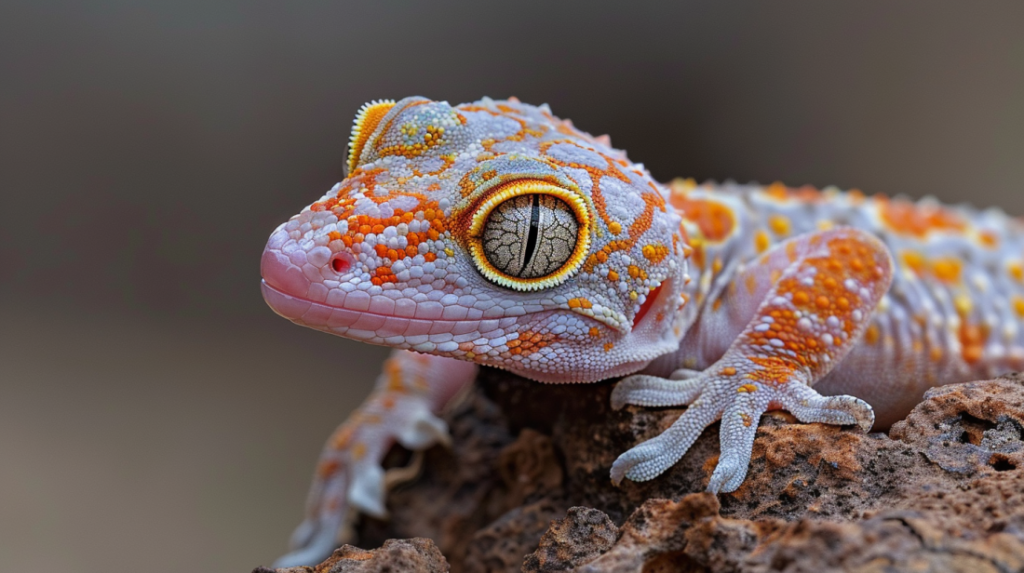
Seasonal Variations in Males:
During Breeding Season (February-September):
- Enhanced pore activity with increased secretions
- More pronounced hemipenal bulges
- Increased territorial behavior
- Weight gain as they prepare for breeding activities
- Enhanced coloration in some morphs
Post-Breeding Season Changes:
- Reduced pore secretions
- Calmer temperament
- Return to baseline activity levels
Seasonal Variations in Females:
Pre-Breeding Preparation:
- Increased appetite to build energy reserves
- Behavioral changes including restlessness
- Physical examination may reveal developing eggs through gentle palpation
During Gravid Period:
- Visible abdominal swelling from developing eggs
- Decreased appetite as eggs take up internal space
- Seeking behavior for appropriate nesting sites
- Weight increase of 10-20 grams when carrying eggs
Post-Laying Recovery:
- Temporary weight loss
- Increased appetite for recovery
- Return to normal activity patterns
Age Considerations for Gender Identification
Juvenile Geckos (0-6 months):
Gender identification in very young leopard geckos is extremely challenging and often inaccurate. Key points include:
- Pre-anal pores may not be fully developed
- Hemipenal bulges are minimal or absent
- Size differences are not yet apparent
- Professional examination may be necessary
Sub-Adult Geckos (6-12 months):
This is the optimal age range for initial gender identification:
- Pre-anal pores become clearly visible
- Hemipenal bulges start to develop in males
- Size differences begin to emerge
- Accuracy rate increases to 90-95%
Adult Geckos (12+ months):
Gender identification becomes most reliable:
- All physical markers are fully developed
- Behavioral differences are clearly established
- Seasonal changes provide additional confirmation
- Near 100% accuracy with proper examination techniques
Tools and Techniques for Accurate Sexing
Essential Equipment:
Basic Examination Kit:
- Bright LED flashlight or natural daylight
- Magnifying glass for detailed pore examination
- Digital camera for documentation and comparison
- Soft towel for secure, comfortable handling
- Gram scale for weight monitoring
Professional Examination Techniques:
The Pore Examination Method:
- Secure the gecko gently but firmly
- Position under bright light for optimal visibility
- Examine pre-anal region first for primary identification
- Check femoral pores for supporting evidence
- Document findings with photos if possible
The Tail Base Assessment:
- View gecko from side to assess tail profile
- Look for hemipenal bulges immediately behind vent
- Compare both sides for symmetrical development
- Note any size differences in tail base width
When to Seek Professional Help:
Consider veterinary or expert assistance when:
- Multiple attempts yield inconsistent results
- Gecko shows signs of stress during examination
- Breeding decisions require 100% accuracy
- Health concerns arise during examination
Common Mistakes in Leopard Gecko Sexing
Mistake 1: Relying Solely on Size
Many new owners assume larger geckos are automatically male. However:
- Individual variation can be significant
- Nutritional differences affect growth rates
- Genetic factors influence adult size
- Female geckos can sometimes be larger than males
Mistake 2: Misidentifying Juvenile Geckos
Attempting to sex very young geckos often leads to:
- Inaccurate initial identification
- Inappropriate housing decisions
- Breeding plan complications
- Unnecessary stress to young animals
Mistake 3: Ignoring Multiple Indicators
Successful sexing requires:
- Combination of physical markers
- Behavioral observation over time
- Seasonal change monitoring
- Professional confirmation when in doubt
Mistake 4: Inadequate Lighting During Examination
Poor lighting conditions result in:
- Missed or misidentified pore patterns
- Incorrect hemipenal bulge assessment
- Overall examination inaccuracy
- Need for repeated stressful examinations
Housing Considerations Based on Gender
Male Housing Requirements:
Solo Housing Benefits:
- Prevents territorial disputes with other males
- Reduces stress-related health issues
- Allows for optimal feeding without competition
- Easier health monitoring and care
Multi-Male Housing Risks:
- Aggressive encounters leading to injury
- Stress-induced appetite loss
- Territorial marking throughout habitat
- Disrupted sleep and activity patterns
Female Housing Options:
Female-Only Groups:
- Generally more compatible than male groups
- Still requires adequate space and multiple hiding spots
- Monitor for dominance hierarchies
- Separate during breeding season if housing with males
Mixed-Gender Considerations:
- Breeding will likely occur in mixed housing
- Requires breeding knowledge and preparation
- Potential for over-breeding stress in females
- Need for egg-laying accommodations
Habitat Specifications by Gender:
| Housing Aspect | Males | Females | Mixed Groups |
| Minimum Tank Size | 20 gallons long | 20 gallons long | 40+ gallons |
| Multiple Hides | Essential | Essential | Critical |
| Breeding Considerations | N/A for single males | Monitor egg-laying | Always prepared |
| Territorial Space | High priority | Moderate priority | Maximum space needed |
Health Monitoring Based on Gender
Male-Specific Health Considerations:
Impaction Risks:
- Pore blockages from excessive secretions
- Substrate-related impaction from territorial behaviors
- Regular pore cleaning may be necessary
Breeding-Related Issues:
- Hemipenal prolapse during breeding attempts
- Overbreeding stress if housed with multiple females
- Territorial injury from male-to-male aggression
Female-Specific Health Considerations:
Reproductive Health:
- Egg-binding (dystocia) – inability to lay eggs
- Follicular stasis – eggs that don’t develop properly
- Post-laying calcium deficiency
- Prolapse risks during egg-laying
Nutritional Needs:
- Higher calcium requirements during breeding season
- Increased protein needs when gravid
- Post-laying recovery nutrition
Regular Health Monitoring Schedule:
Monthly Checks:
- Weight monitoring and record keeping
- Pore examination for blockages or infections
- General body condition assessment
- Behavioral pattern documentation
Seasonal Assessments:
- Pre-breeding health evaluation
- Nutritional status review
- Reproductive readiness if breeding is planned
- Post-season recovery monitoring
Expert Tips for New Gecko Owners
Building Confidence in Gender Identification:
Start with Clear Examples:
- Observe adult geckos at reptile shows or pet stores
- Compare known males and females side by side
- Take photos for future reference
- Join reptile communities for peer learning
Practice Safe Handling:
- Support the gecko’s body at all times
- Move slowly and deliberately
- Recognize stress signals and respond appropriately
- Limit examination time to reduce stress
Long-Term Ownership Strategies:
Documentation:
- Keep detailed records of growth and development
- Photo documentation of physical changes over time
- Behavioral notes and pattern recognition
- Health monitoring logs
Professional Relationships:
- Establish veterinary care with reptile-experienced vets
- Connect with local reptile groups
- Find experienced mentors in the gecko community
- Attend reptile education events
Frequently Asked Questions
Q1: At what age can I accurately determine my leopard gecko’s gender?
Answer: The most accurate gender identification occurs when leopard geckos reach 6-8 months of age and weigh approximately 45-50 grams. At this age, pre-anal pores and hemipenal bulges become clearly visible in males, while females show the absence or minimal development of these features. Attempting to sex geckos younger than 4-5 months often results in inaccurate identification due to underdeveloped sexual characteristics.
Q2: Can male and female leopard geckos be housed together safely?
Answer: Male and female leopard geckos can be housed together, but this arrangement comes with important considerations. Breeding will likely occur, requiring preparation for egg-laying and potential offspring care. Females may experience breeding stress if constantly pursued by males, and proper nutrition becomes critical during reproductive periods. Many experienced keepers recommend housing genders separately unless actively breeding, as it simplifies care and reduces stress-related health issues.
Q3: What should I do if I’m still unsure about my gecko’s gender after examination?
Answer: If gender identification remains uncertain after following proper examination techniques, consider seeking professional assistance from a reptile veterinarian or experienced gecko breeder. Take clear, well-lit photos of the pre-anal region and tail base to share with experts. Many reptile communities and online forums have knowledgeable members who can provide guidance. Remember that some geckos may have less pronounced sexual characteristics, making identification more challenging even for experts.
Q4: Do male leopard geckos require different care than females?
Answer: While basic care requirements remain the same, there are some gender-specific considerations. Males may need regular pore cleaning if secretions become excessive, and they generally require individual housing to prevent territorial aggression. Females need additional calcium supplementation during breeding season and may require nesting boxes if gravid. Both genders benefit from appropriate nutrition, proper heating, and regular health monitoring, but reproductive considerations can influence specific care requirements.
Q5: How often do female leopard geckos lay eggs, and what signs should I watch for?
Answer: Female leopard geckos can lay eggs every 2-4 weeks during breeding season (typically February through September), producing 2 eggs per clutch. Signs of a gravid female include increased appetite followed by decreased eating, restless behavior, digging motions, and visible abdominal swelling. Provide a humid laying box with moist substrate when these signs appear. If a female shows signs of being gravid but doesn’t lay eggs within 2-3 weeks, consult a reptile veterinarian as egg-binding can be life-threatening.
Q6: Is it normal for male leopard geckos to be more aggressive during certain times of the year?
Answer: Yes, male leopard geckos typically show increased territorial and aggressive behavior during breeding season, which generally runs from February through September. During this time, males may exhibit more frequent tail waving, head bobbing, vocalizations, and territorial marking through pore secretions. They may also be less tolerant of other geckos and show increased activity levels, especially at night. This seasonal behavior is completely normal and usually subsides as breeding season ends and daylight hours decrease in fall and winter.
For more expert pet care tips and product recommendations, visit BlithePet.com your trusted source for pet wellness.
Conclusion
Successfully identifying male vs female leopard gecko differences requires understanding multiple physical and behavioral indicators working together. The six key signs we’ve explored—pre-anal pores, femoral pores, hemipenal bulges, body size differences, behavioral patterns, and seasonal changes—provide a comprehensive framework for accurate gender identification.
Remember that patience and practice are essential for developing confidence in gecko sexing. While pre-anal pores and hemipenal bulges remain the most reliable indicators, combining multiple assessment methods ensures accuracy and helps you become a more knowledgeable gecko owner.
Whether you’re planning breeding projects, making housing decisions, or simply wanting to better understand your pet, accurate gender identification enhances your ability to provide optimal care. As your gecko matures and you gain experience with these identification techniques, you’ll find that recognizing these important differences becomes second nature.
The key to successful leopard gecko ownership lies in understanding your pet’s individual needs, which are often influenced by gender-specific characteristics. By mastering these identification skills, you’re taking an important step toward becoming a more informed and confident reptile keeper.
Have a similar experience with your pet? Share it in the comments below!

